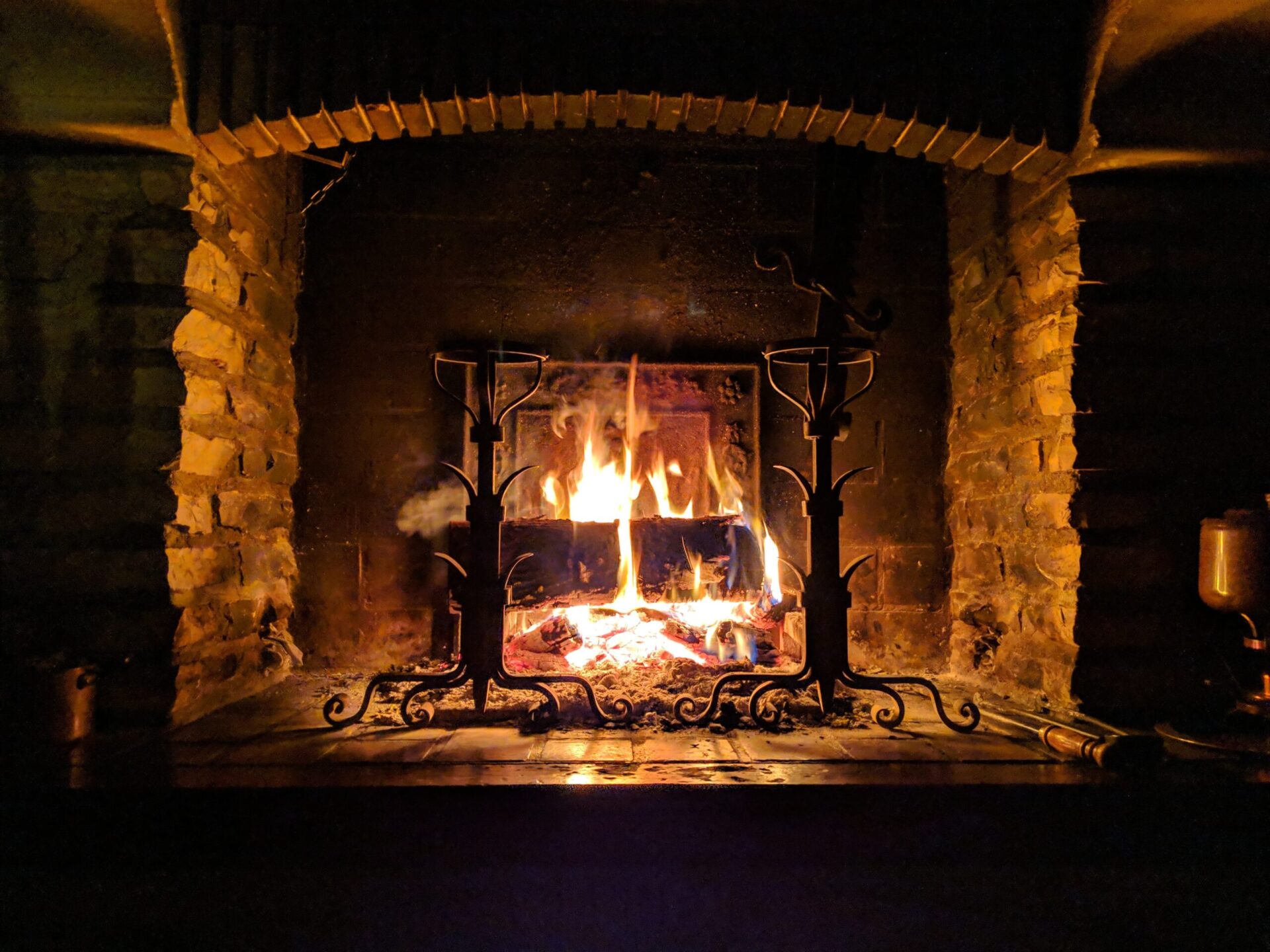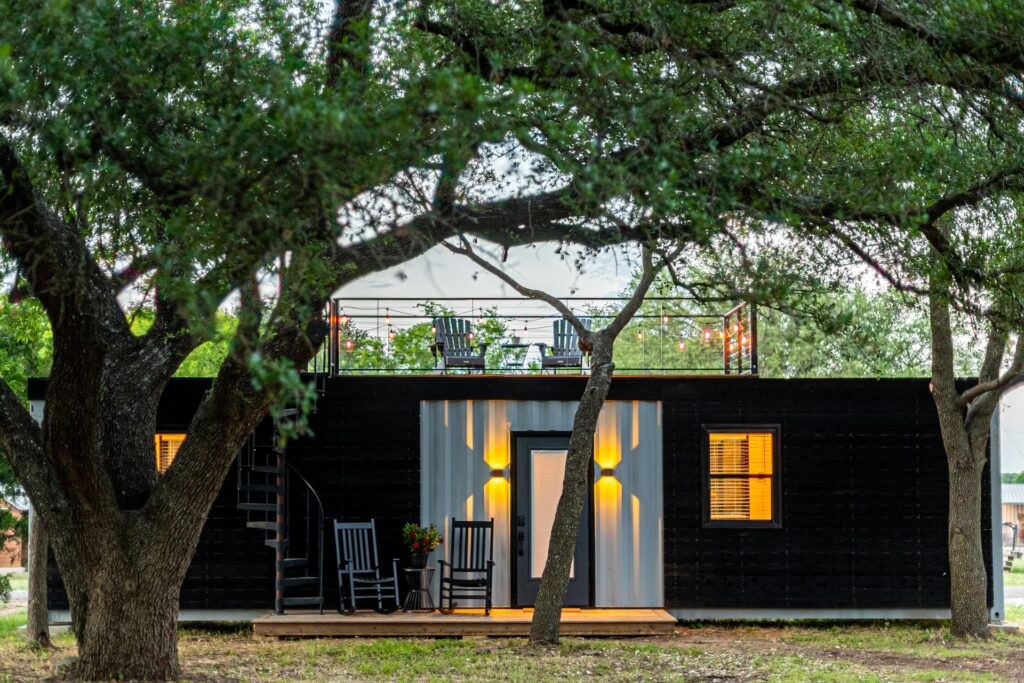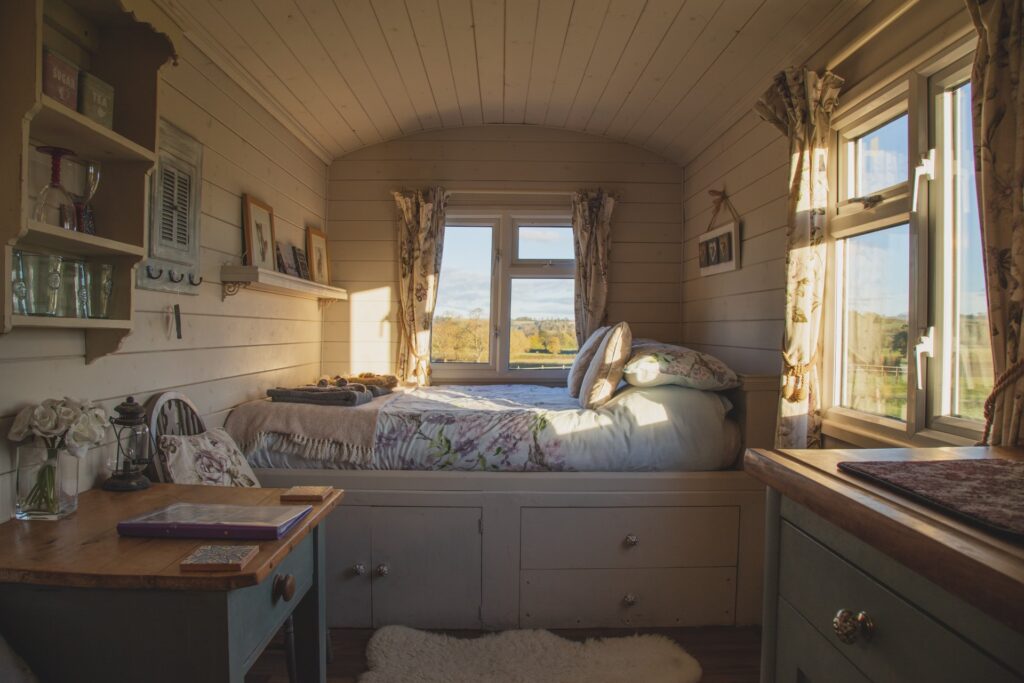
We are reader-supported. When you buy through links on our site, we may earn an affiliate commission.
The coziness of sitting on a couch with the fire going next to your holiday decorations completes the ideal atmosphere for togetherness and festivity. However, depending on where you live, heating your home in the winter could not only be expensive but also detrimental to the environment.
There are plenty of energy-efficient ways to heat your home this winter. Heating a home sustainably is achieved with changes to lifestyle habits or more overarching home improvements — let’s analyze some of the most significant options.
Home Habit Shifts
1. Close Doors and Drapes
Sometimes a room doesn’t feel like it’s warming up because there’s too much space. Closing doors to rooms is one way to keep heat centralized and prevent excess heat from escaping to unwanted areas — including outside.
Also, closing blinds and drapes prevents heat from seeping through the minuscule cracks potentially present in your windows. Drapes could reduce heat loss by up to 10%, which may not seem noteworthy, but in conjunction with closing doors, they can make a noticeable difference.
2. Reverse Ceiling Fans
Most people know ceiling fans for circulating cool air, allowing us to feel temperate in the warmer seasons. What most don’t recognize is the typical counterclockwise motion of ceiling fan blades pushes warm air up to provide that cooling effect — so why not reverse them?
Some ceiling fans do not have this function, but find some help when inspecting your fans — for safety. You may be able to reverse the ceiling fan blades to a clockwise rotation so it will push warm air back down.
3. Space Heaters
Space heaters don’t have to be energy wasters, so long as they’re monitored and conscientiously designed. Advancements in space heaters have made them far more efficient than fireplaces or baseboard heaters. Setting rules for yourself, such as setting the space heater at a limited maximum temperature and only having them turned on in rooms you are in, will aid energy efficiency while heating your home.
4. Maximize Residual Heat
Winter comes with a lot more than relaxing aesthetics — it also comes with comfort food and self-care. A home offers plenty of chances for us to use residual heat, including your kitchen and bathroom. Consider optimizing that heat that would otherwise be trapped.
Residual heat from preparing sizzling meals and making cozy hot chocolate will warm your space by proxy — and you’re warming up your body as a bonus. All appliances use different degrees of energy, so ensure you have the most eco-friendly appliances available if you use energy anyway. If you slow-cook your meals, that’s a great way to release gradual heat in a small kitchen.
Other tips include opening your oven door as it cools down. However, do not heat your oven to act as a heater, as this is dangerous for pets and children, and it is not energy-efficient. You can also open the doors to your bathroom for a little bit after a steamy shower or bath to let the warm air permeate elsewhere in the house — but remember to shut the door after.
Home Improvement Overhauls
1. Hydronic Heat Systems
If you’re looking for energy-efficient ways to heat your home and want a more intensive overhaul, look into alternatives like hydronic heating. Water has a higher heating capacity than air — 3,500 times greater than air, to be exact. Boilers will heat the water in your home, and then it’s circulated through radiators and pipes to distribute heat from thermal radiation.
2. Geothermal Heating
Humans see geothermal heating all over the planet in steam vents and geysers — so, naturally, we should incorporate this model into our homes. Geothermal heating plants take Earth’s natural warmth from the water reservoirs underneath the crust and use it to power heating sources. Research local options or see if your energy company will let you opt for geothermal heating.
The biggest bonus of geothermal energy is that there are plenty of tax incentives on top of the money you’re already saving from your lowered energy bill.
3. Passive Solar Heating
If your home has south-facing windows with a nice awning, you could optimize passive solar heating from the sun. Appropriately paned windows allow warmth to enter the home during winter, while the awning keeps the house cool in the summer. The flooring material also matters because it can store heat to release gradually as the day goes on. Take advantage of the sun’s free energy, as it is one of the most energy-efficient ways to heat your home.
4. Biomass Heating
Biomass stoves and boilers burn wood logs, chips, or pellets to produce warmth. They are energy-efficient heating methods because they can also be fitted back to boilers to heat your water. Biomass alternatives are often cheaper and produce fewer emissions than traditional heating methods like gas. Systems are in place to capture ash particles and filter gases, so they are dust-free for all your winter gatherings and movie nights.
Eco-Friendly Heat for the Winter
Even if snow makes the outdoors a blanket of white, being green is possible regardless of budget or resources. Even if doing major home renovations isn’t in the cards right now, you can still be eco-friendly by simply being aware of methods to heat your home that use fewer resources and share that with friends and family.










